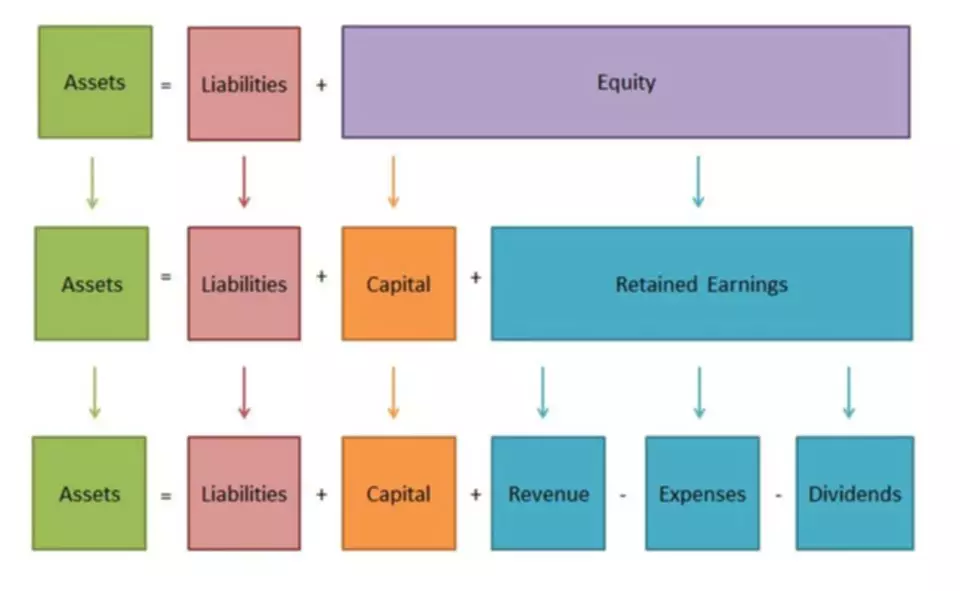Content

Horizontal analysis is an approach used to analyze financial statements by comparing specific financial information for a certain accounting period with information from other periods. Generally accepted accounting principles are based on the consistency and comparability of financial statements.
- A company’s financial statements – such as the balance sheet, cash flow statement, and income statement – can reveal operational results and give a clear picture of business performance.
- We’re firm believers in the Golden Rule, which is why editorial opinions are ours alone and have not been previously reviewed, approved, or endorsed by included advertisers.
- All such information is provided solely for convenience purposes only and all users thereof should be guided accordingly.
- These include white papers, government data, original reporting, and interviews with industry experts.
- Download our free course flowchart to determine which best aligns with your goals.
- For example, if Mistborn Trading set total assets as the base amount and wanted to see what percentage of total assets were made up of cash in the current year, the following calculation would occur.
A horizontal analysis is most useful when the underlying financial information is consistently reported, based on the applicable financial reporting framework. Examples of these frameworks are generally accepted accounting principles and international financial reporting standards. Ideally, every business within an industry should apply an accounting framework in the same way, so that their reported financial information can be compared. When a business takes an unusual position in regard to reporting standards, its financial statements will not be as readily comparable to those of its competitors.
Analysis and Interpretation of Financial Statements
Accountants, investors, and business owners regularly review income statements to understand how well a business is doing in relation to its expected performance, and use that understanding to adjust their actions. A business owner whose company misses targets might, for example, pivot strategy to improve in the next quarter. Similarly, an investor might decide to sell an investment to buy into a company that’s meeting or exceeding its goals. On the other hand, comparability constraint dictates that a company’s financial statements and other documentation be such that they can be evaluated against other similar companies within the same industry. Horizontal analysis is used to improve and enhance these constraints during financial reporting. Consistency constraint here means that the same accounting methods and principles must be used each year since they remain constant over the years.

By seeing the trend, which is a remarkable growth of over 100% from one year to the next, we can also see that the trend itself is not that remarkable of only 10% change from 2013 at 110% to 120% in 2014. Which could show, that perhaps growth is starting to stagnate or level-off. For example, although interest expense from one year to the next may have increased https://www.bookstime.com/ 100 percent, this might not need further investigation; because the dollar amount of increase is only $1,000. In a Horizontal Analysis, we state both the dollar amount of change and the percentage of change, because either one alone might be misleading. The ability to spot this trend over time empowers you to intervene and be pro-active in solving the problem.
The Income Statement vs. the Balance Sheet
Liquidity ratios are needed to check if the company is liquid enough to settle its debts and pay back any liabilities. Horizontal analysis makes it easy to detect these changes and compare growth rates and profitability with other companies in the industry. An absolute comparison involves comparing the amount of the same line of the item to its amounts in the other accounting periods. For horizontal analysis example, comparing the accounts receivables of one year to those of the previous year. The horizontal method of analysis is used to identify changes in financial statements over time and assess those changes. Step 1 – Perform the horizontal analysis of income statement and balance sheet historical data. First, we have Colgate’s income statement’s YoY growth rates from 2008 until 2015.
- For instance, a large increase in Sales returns and allowances coupled with a decrease in Sales over two years would be cause for concern.
- For instance, if you run a comparative income statement for 2019 and 2020, horizontal analysis allows you to compare the revenue totals for both years to see if it increased or decreased, or remained relatively stable.
- This can obviously be a big barrier to entry to investors wanting to get in on a business like Google.
- To learn more, please see ouronline coursesto learn the process step by step.
- It also compares a company’s performance from one period to another (current year vs. last year).
- Horizontal and vertical analysis are two types of analysis you can do that use simple mathematical formulas.
Through horizontal analysis of financial statements, you would be able to see two actual data for consecutive years and would be able to compare every item. For instance, instead of creating a balance sheet or income statement for one specific period of time, you would also create a comparative income statement or balance sheet that covers quarterly or annual activity for your business. Vertical analysis is also known as common size financial statement analysis. With horizontal analysis, you look at changes line-by-line, between specific accounting periods – whether it be monthly, quarterly, or annually. Horizontal analysis sometimes referred to as trend analysis, is used to identify trends over a particular number of accounting periods. Vertical analysis, also called common-size analysis, focuses on the relative size of different line items so that you can easily compare the income statements and balance sheets of different-sized companies. Even though vertical analysis is a statement comparison within the same year, MT can use information from the prior year’s vertical analysis to make sure the business is operating as expected.
Horizontal Analysis Formula
Using consistent accounting principles like GAAP ensures consistency and the ability to accurately review a company’s financial statements over time. Comparability is the ability to review two or more different companies’ financials as a benchmarking exercise.
